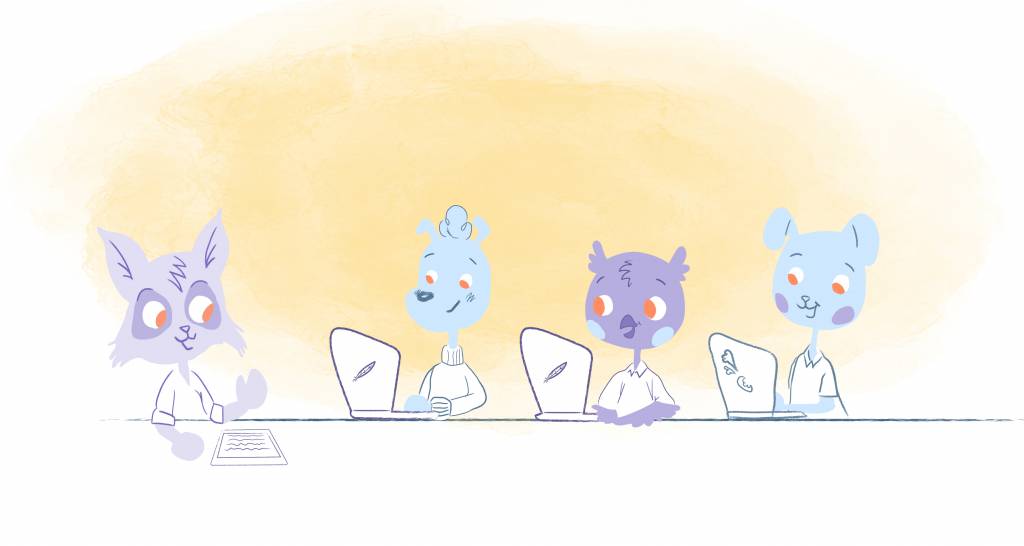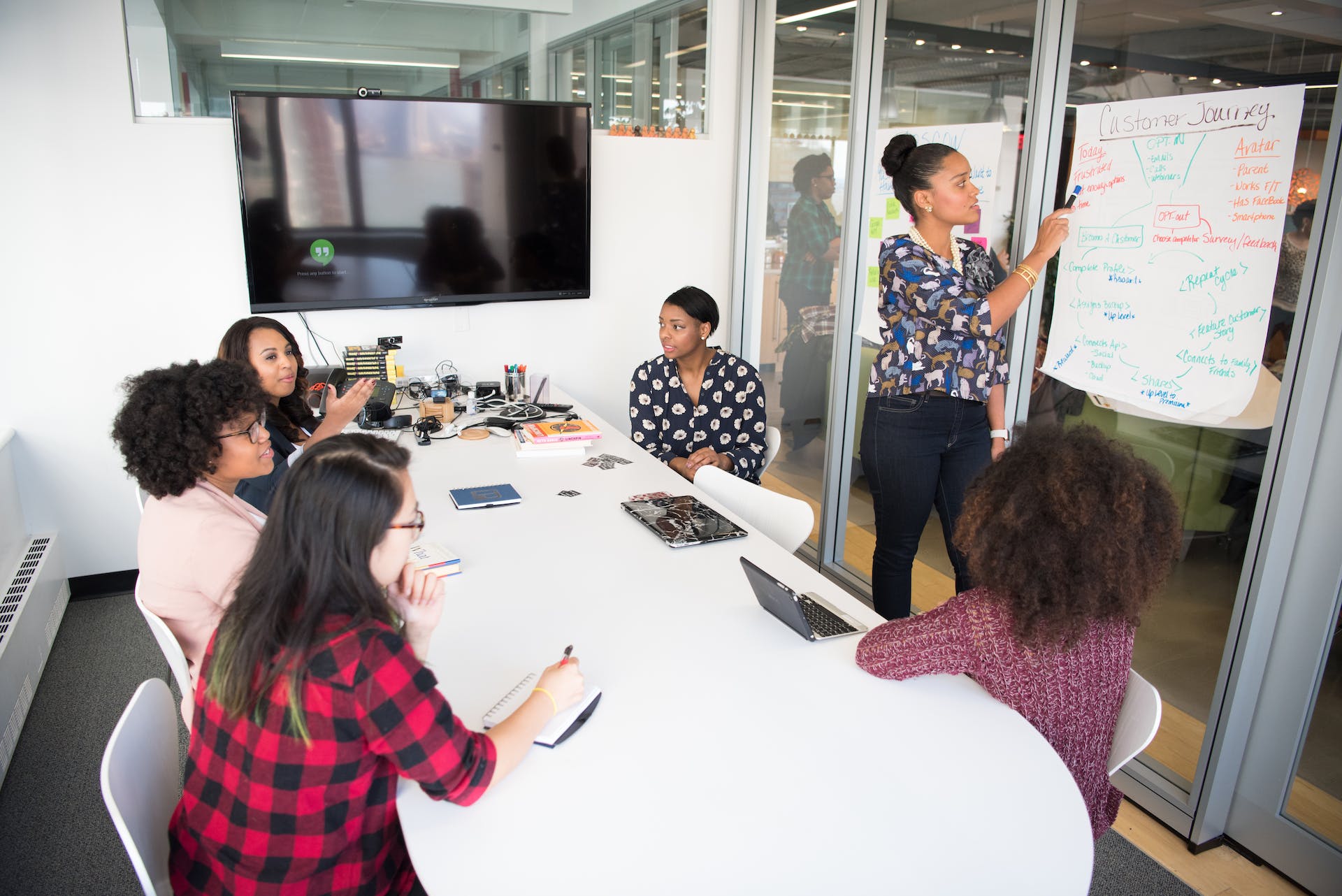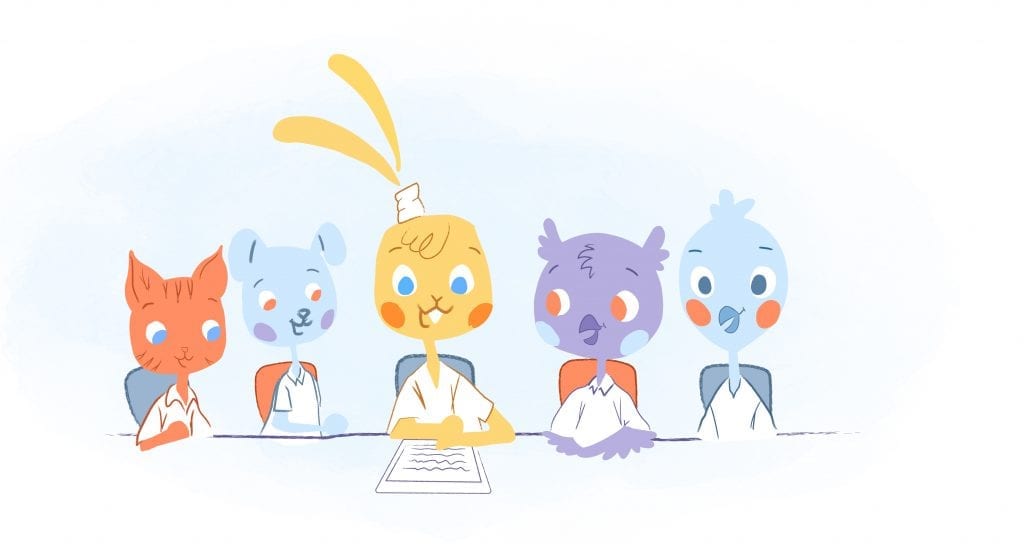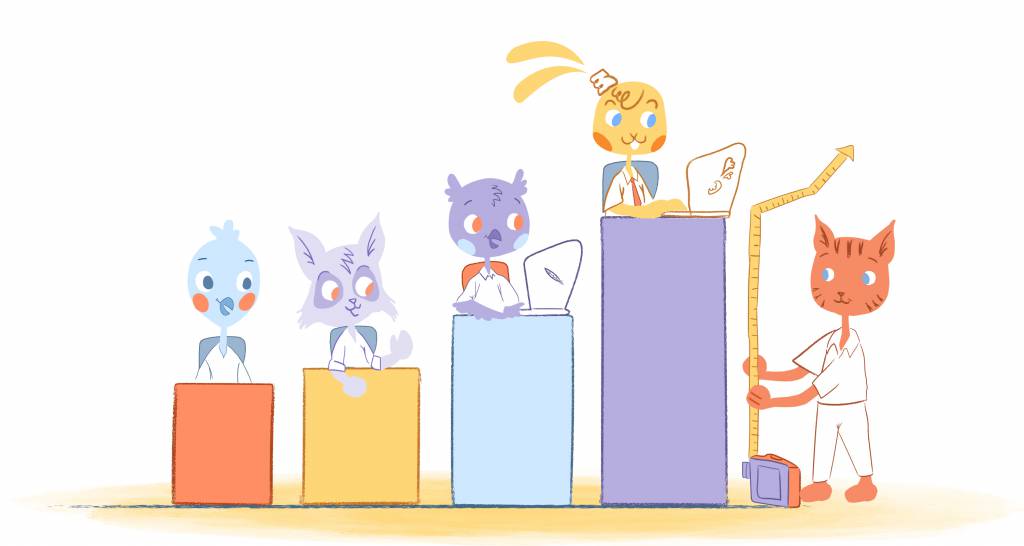

Most of us dread meetings. And for a good reason. They can be a huge waste of time for both the host and attendees.
If you want to make sure that your next meeting isn’t a waste of time you first need to make sure it’s necessary. If it is essential, keep it short and concise.
You also need to keep your audience engaged throughout the entirety of the meeting. Want to know how to prevent employees from snoozing or on their phones? Start with these 10 techniques.
1. Start at the end.
You want to let your audience know the purpose of the meeting from the get-go. Knowing what the meeting is for will tell your team that the schedule is necessary and something that they are required to attend.
You also want to let them know what they’re going to learn from this particular meeting so that the employee will keep focused on your key points, as well as giving them something to look forward to.
2. Be authentic, vulnerable, and energetic.
The easiest way to do this? Share personal stories — both the good and bad narrative will build a connection with the audience. It also helps your audience get to know you and build trust.
It’s also a part a part of human nature. As noted in Time, studies show that “storytelling is a powerful means of fostering social cooperation and teaching social norms, and it pays valuable dividends to the storyteller. A great story improves their chances of being chosen as social partners, receiving community support and even having healthy offspring.”
Just make sure to keep your stories short and relevant to captivate others.
And, don’t hold-back your energy levels. I don’t know about you, but I wouldn’t want to listen to an unrealistic individual talk for 30-minutes or more. When you tell a success story, show some excitement about the way you felt. When you share a failure, don’t be afraid to convey that sadness and frustration you felt.
3. Keep tabs on your audience’s attention spans.
Did you ever wonder why Ted Talks are no longer than 18-minutes? It’s because that amount of time is just enough time to present a thoughtful description, but short enough to hold people’s attention. You should apply that same mentality to meetings by making sure they’re under 30-minutes.
If the meeting needs more time than that, then schedule the meeting in 22-minute blocks. This way everyone can take a break to recharge and refocus.
4. Skip the jargon.
One of the most significant problems that I notice during meetings is that the speaker isn’t communicating effectively. And the main culprit? Jargon.
You may use these industry terms and slang freely throughout the day, but not everyone else does. For example, if you’re planning a social media campaign, your developer or designer may not know what the heck your social media manager is talking about. So, why is this person in the room? Because you need that developer to design social content like infographics.
In short, skip the jargon — and the fancy words as well — and use the same language your audience does. Also, be mindful of your pace. You always want to speak slowly and clearly.
5. Make it a dialogue, not monologue.
Don’t just speak “at” your audience. When you drone on-and-on your audience or team is going to lose interest rather quickly. Instead, direct your comments to them with attention directed toward them. Ask frequently for their input, feedback, and opinions. Stop at certain points and see if they have any questions.
The more your audience participate in a dialogue or discussion, the more they’ll be engaged throughout the meeting.
6. Add interactivity.
Besides encouraging dialogue, you can also get your audience to be a part of your discussion and presentation through interactivity. Involving your members can be done by quizzing them or allowing the team to break into groups.
You can also try:
- Having the speaker answer crowd-sourced questions.
- Using technology during a panel discussion, like real-time polling on what the audience wants to discuss.
- Pecha Kucha. Pecha Kucha is a presentation format where the speaker shows 20 images for 20 seconds each. Presenting images makes sure the talk is done in under six minutes.
- Using a live barometer where attendees move to either the left or right side of the room depending on if they’re for or against a statement.
- Gamification. For example, you ask your team to spot something that’s incorrect in your presentation. The first person to correct it gets a prize.
- Holding a standing or walking meeting, so you’re physically moving while the meeting is underway.
7. Only share handouts when necessary.
If you’re sharing detailed information and facts then you want to have that information on a slide so that your audience can visually see it — remember, we’re visual creatures. You also should prepare reports and handouts so that your audience now has the information in their hands.
However, you should wait until you’re finished speaking to hand these materials out. If your audience has them while you’re talking, they’ll most likely be reading the report or handout instead of listening to what you have to say.
8. Have them check their phones at the door.
Between emails, texts, and social media notifications it’s easy to see why smartphones are one of the biggest distractions during a meeting. To ensure that your audience is focused on you and not their phone, ask attendees to either turn off their phones or put them on airplane mode.
I’m actually in favor of what President Obama did while in office. He had everyone write their name on a sticky note and place it on their phone. Each phone was put in a basket before entering the meeting. Taking a phone from someone seems a little controlling to me — but appeared to work for this group. A simple, low-tech, and effective way to prevent your audience from getting distracted by their phones during a meeting.
9. Choose the right space.
How productive do you think you’ll be if you had to work in a bland office with no windows, plants, or white noise? If you’re like most people, not productive at all.
Inspire attendees and spark their creativity by having the meeting in space where there’s plenty of natural light, air, and comfortable seating. If you’re meeting with someone one-on-one, you could have the meeting in a neutral location that breeds creativity, such as a coffee shop.
10. Give then “brain food.”
Brain food means that you should give attendees food. And no, this doesn’t mean donuts. It should be food that increases brain-power, such as almonds, walnuts, cashews, yogurt, eggs, bananas, and blueberries. If it’s during lunch, provide small sandwiches that contain chicken or turkey, avocado, and tomatoes.
These foods will help your audience concentrate and boost their energy so that they’ll be more engaged with you.











Albert Costill
My name is Albert Costill and I'm a content marketer at Calendar. If I can help people become more productive in my journey, even better. If you ever have a question about your Calendar or how you can use it - - don't hesitate to reach out. I'm a Calendar Pro.